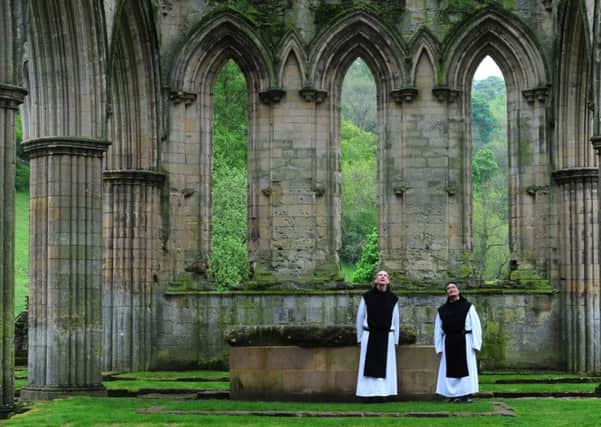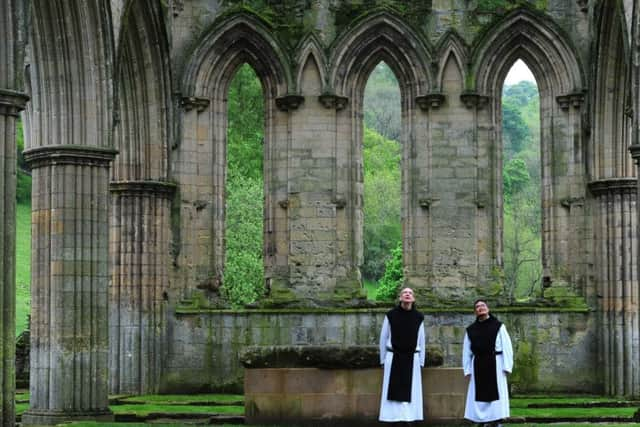In pictures: After £1.8m revamp, treasures of abbey Henry wrecked go on show


Rievaulx Abbey, near Helmsley in North Yorkshire, was one of the richest and most spiritually significant abbeys in England when it was wrecked on the orders of the king and Thomas Cromwell in 1538.
The Abbey has had a £1.8m facelift, including a new tea room, visitor centre and revamped museum, which has allowed previously unseen artefacts, including two 12th century chess pieces possibly used by the abbot to entertain guests, to go on display.
Advertisement
Hide AdAdvertisement
Hide AdThe exhibition also includes the imposing screen from the church, which has been reassembled for the first time and serves as the centrepiece to the new English Heritage museum.


Other key exhibits include a half-tonne lead bar stamped with Henry’s emblem – all that remains of the abbey’s roofs and windows – as well as medieval stone carvings which tell the story of the rise and dramatic fall of the first Cistercian abbey in the North of England.
Dr Michael Carter, senior properties historian for English Heritage, said: “Rievaulx Abbey is one of the most important abbeys in England, and the setting one of the most beautiful.
“It was a place of huge spiritual significance for the country – two of its abbots were venerated as saints – and one utterly transformed by dramatic upheavals under Henry VIII.
Advertisement
Hide AdAdvertisement
Hide Ad“Our new museum now does justice to the abbey’s whole story, showcasing its most important artefacts, many of which have never been seen before.”


The revamp has also made more of visitor favourites like the rare Christ in Majesty, the first object people will see going in the new “beautifully lit” museum.
“The Christ in Majesty is now on its own plinth and looks absolutely stunning,” said collections curator Susan Harrison.
The headless sculpture reflects the history of the site.
In December 1538, after over 400 years in which it had grown to become one of the most powerful and spiritually renowned centres of monasticism in Britain, Rievaulx Abbey was dissolved by the king.
Advertisement
Hide AdAdvertisement
Hide AdThe site was treated like a salvage yard, with everything of value removed.
Four massive lead ingots were found by the West Door where they had been waiting transport when the area was cleared in 1920.
Three went to relead the Five Sisters Window at York Minster while the fourth remained at the abbey, where it can be seen today.
As well as trying to give visitors a better understanding of the site, English Heritage wants to give people “a warmer welcome and a better sense of place”, said Liz Page, historic properties director. She said a “beautifully tiled wall” using some of the old tiles from the abbey will greet visitors.
Advertisement
Hide AdAdvertisement
Hide AdMany of the ruined buildings, which are visited by 45,000 people a year, were built by Aelred, abbot from 1147 to 1167, who became the most prominent religious figure of his day in England.
The ruins later became a centre for the Picturesque art movement in the 18th century.
Author and poet Dorothy Wordsworth, who visited in 1802, described how she “could have stayed in this solemn, quiet spot all evening without a thought of moving, but William was waiting for me”.
The revamp is the first capital investment project to be delivered under English Heritage’s new status as a charity.
Ticket prices have risen from £7 to £8.70 for adults. It now costs £5.30 for a child, £7.90 for concessions and £22.90 for a family.